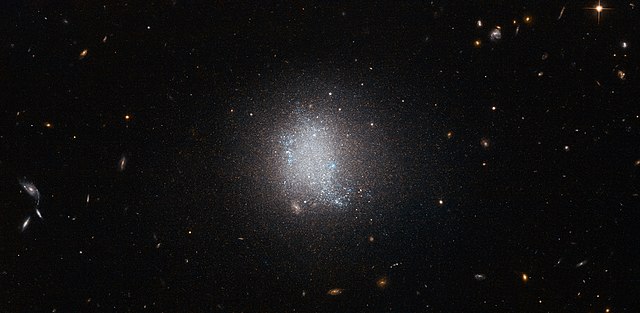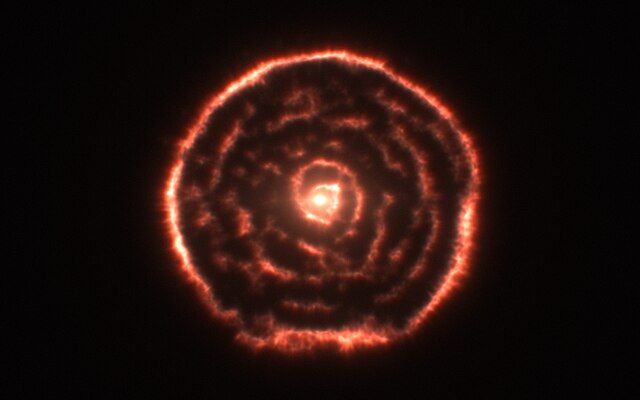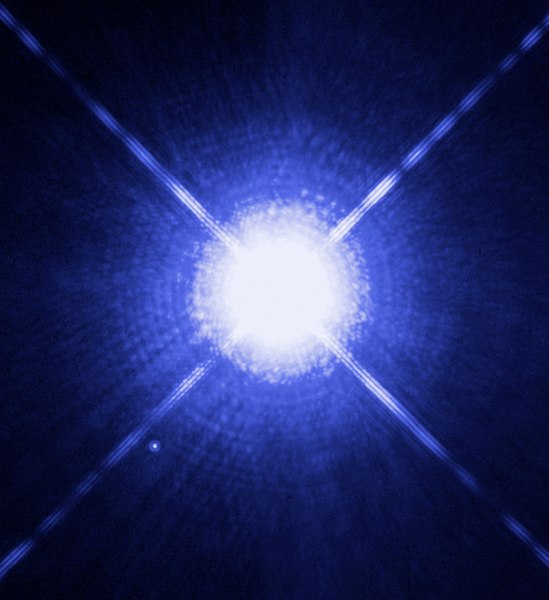A hypergiant (luminosity class 0 or Ia+) is a very rare type of star that has an extremely high luminosity, mass, size and mass loss because of its extreme stellar winds. The term hypergiant is defined as luminosity class 0 (zero) in the MKK system. However, this is rarely seen in literature or in published spectral classifications, except for specific well-defined groups such as the yellow hypergiants, RSG (red supergiants), or blue B(e) supergiants with emission spectra. More commonly, hypergiants are classed as Ia-0 or Ia+, but red supergiants are rarely assigned these spectral classifications. Astronomers are interested in these stars because they relate to understanding stellar evolution, especially star formation, stability, and their expected demise as supernovae. A common example of a hypergiant is UY Scuti, although being a supergiant UY Scuti is considered a hypergiant by some people.
Great nebula in Carina, surrounding Eta Carinae
Very Large Telescope image of the surroundings of VY Canis Majoris
Field surrounding the yellow hypergiant star HR 5171
A hypergiant star and its proplyd proto-planetary disk compared to the size of the Solar System
In astronomy, stellar classification is the classification of stars based on their spectral characteristics. Electromagnetic radiation from the star is analyzed by splitting it with a prism or diffraction grating into a spectrum exhibiting the rainbow of colors interspersed with spectral lines. Each line indicates a particular chemical element or molecule, with the line strength indicating the abundance of that element. The strengths of the different spectral lines vary mainly due to the temperature of the photosphere, although in some cases there are true abundance differences. The spectral class of a star is a short code primarily summarizing the ionization state, giving an objective measure of the photosphere's temperature.
UGC 5797, an emission-line galaxy where massive bright blue stars are formed
Artist's impression of a Y-dwarf
Image of the carbon star R Sculptoris and its striking spiral structure
Sirius A and B (a white dwarf of type DA2) resolved by Hubble








